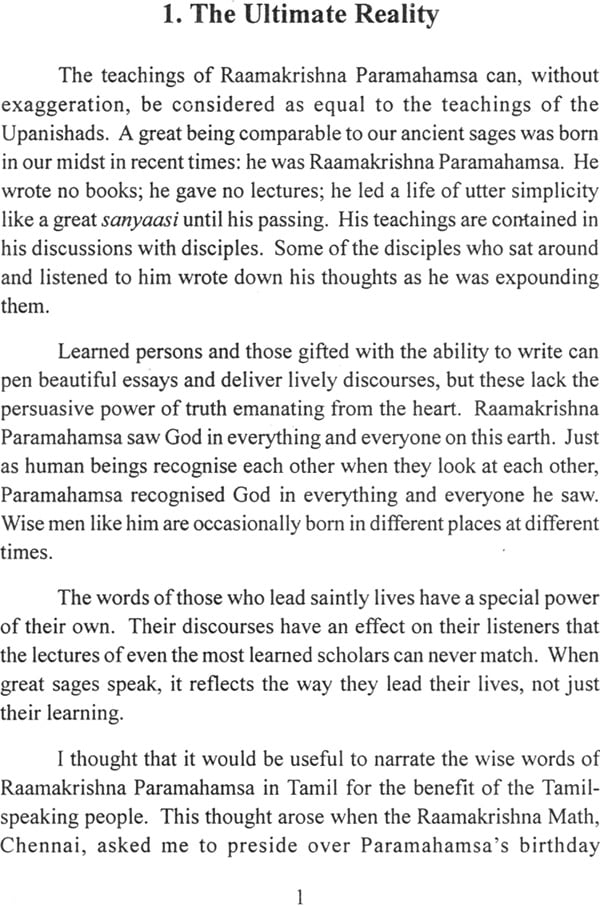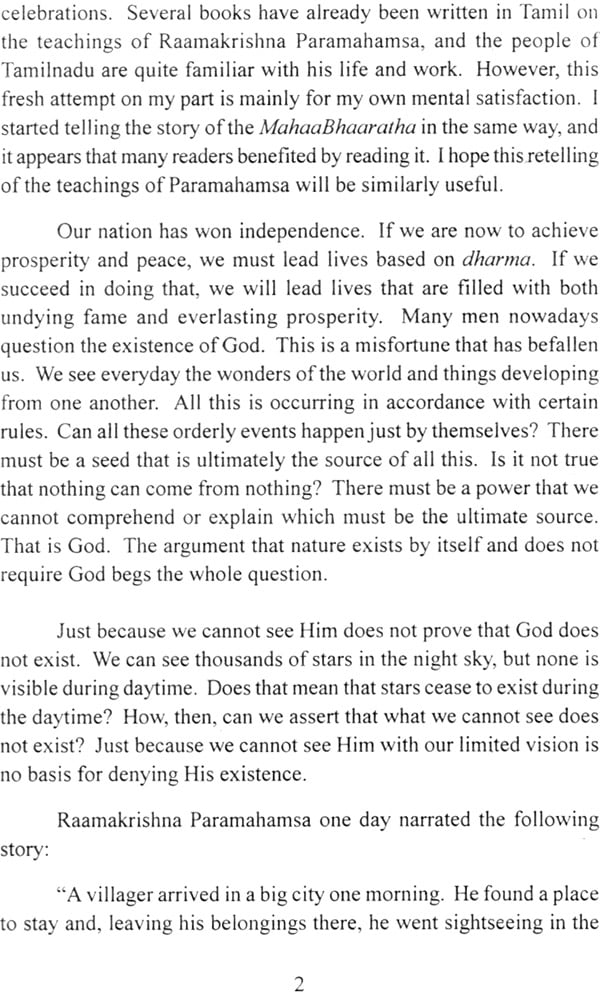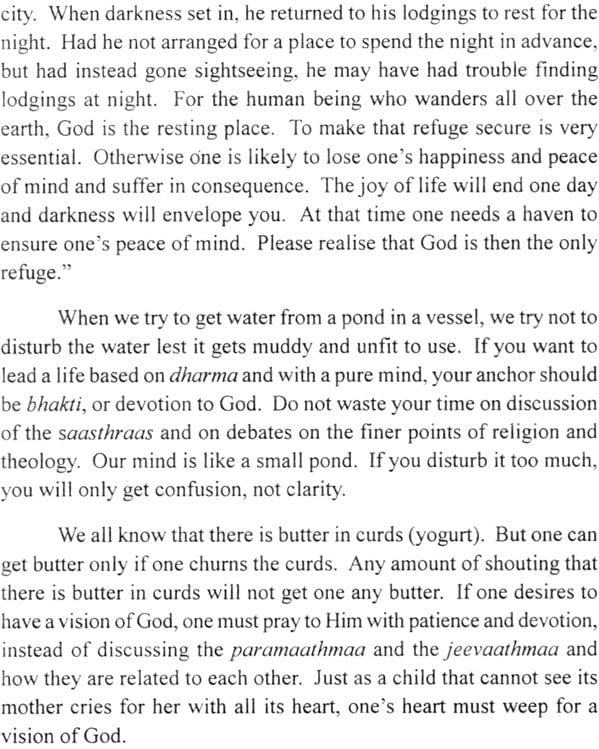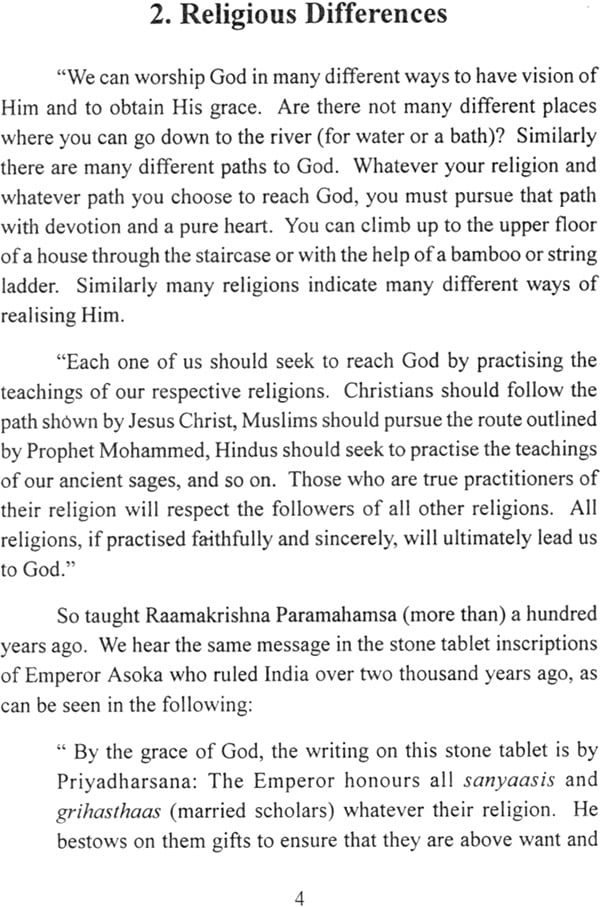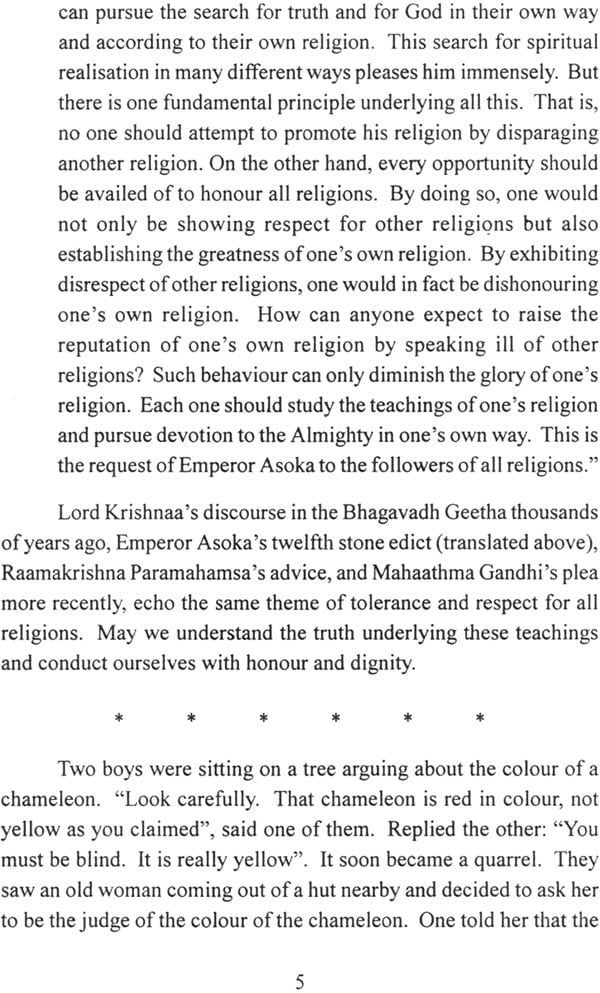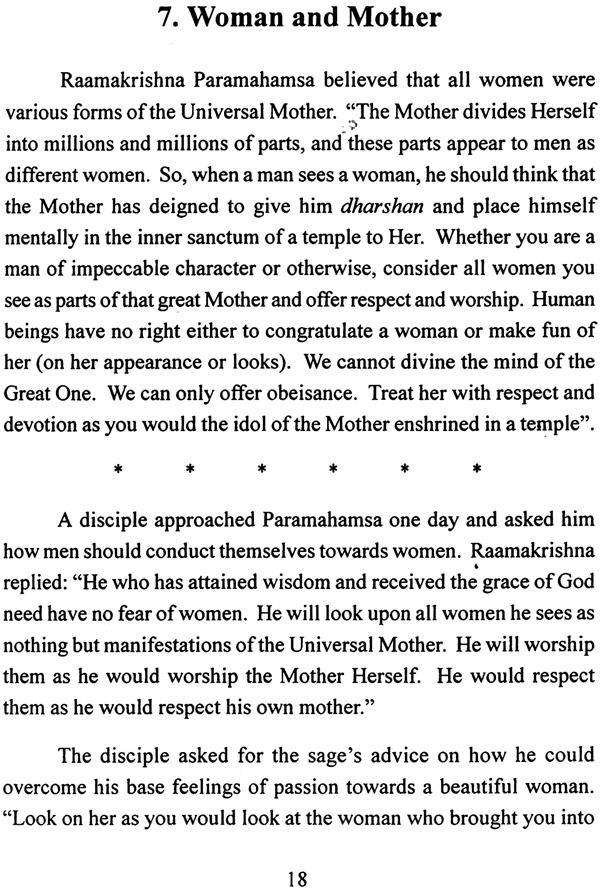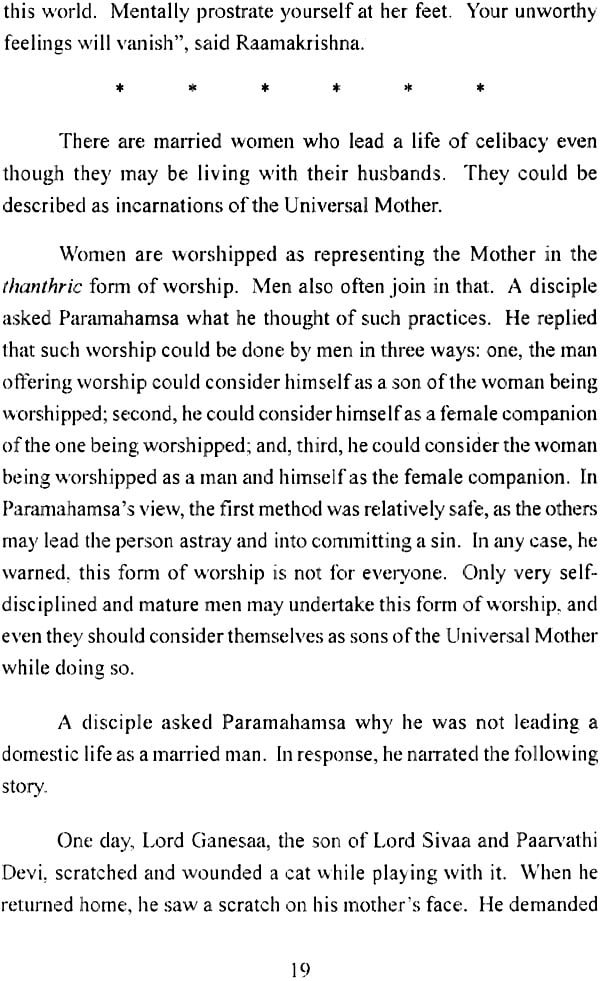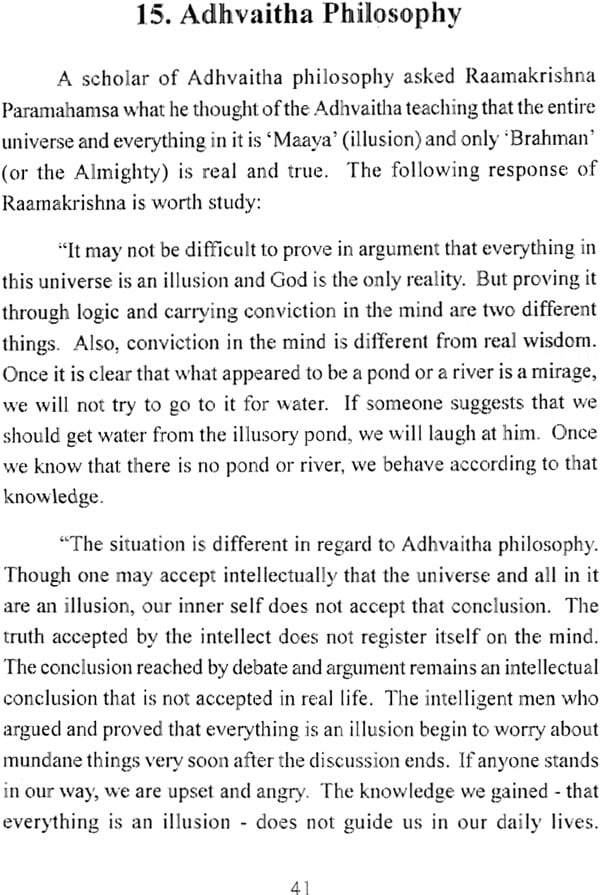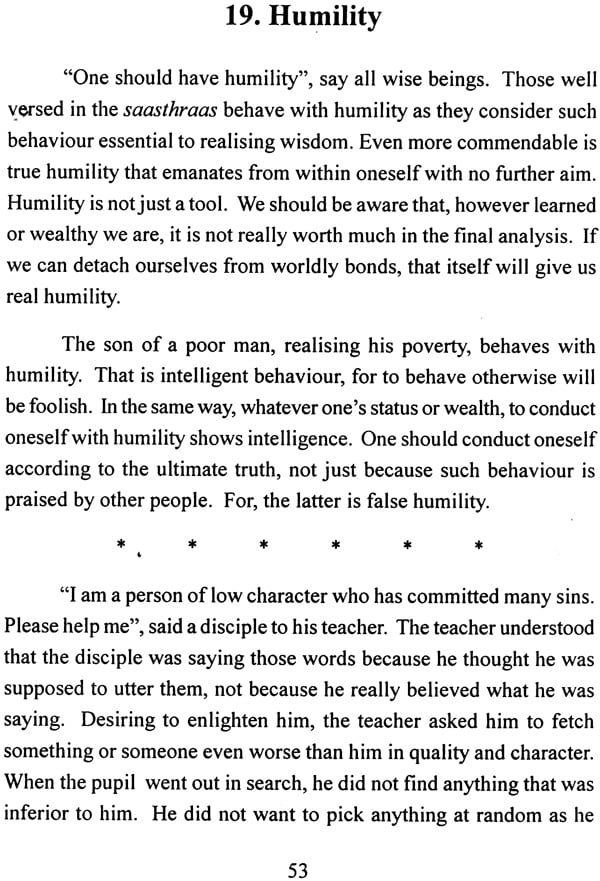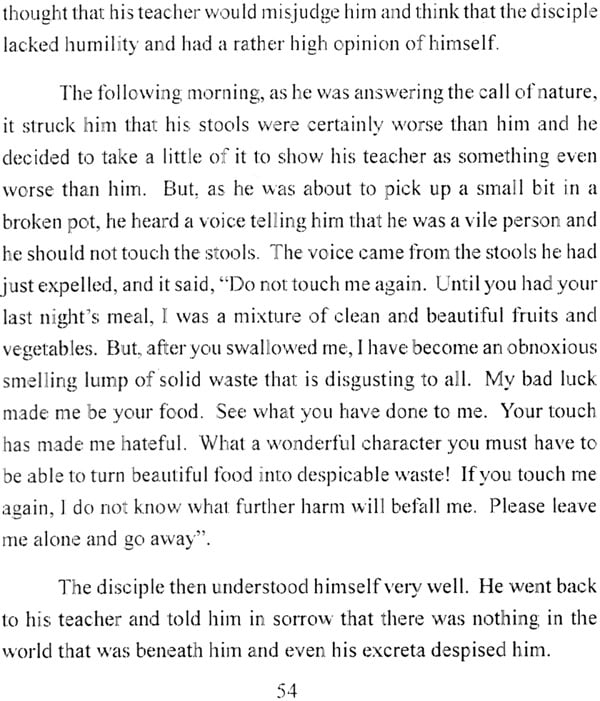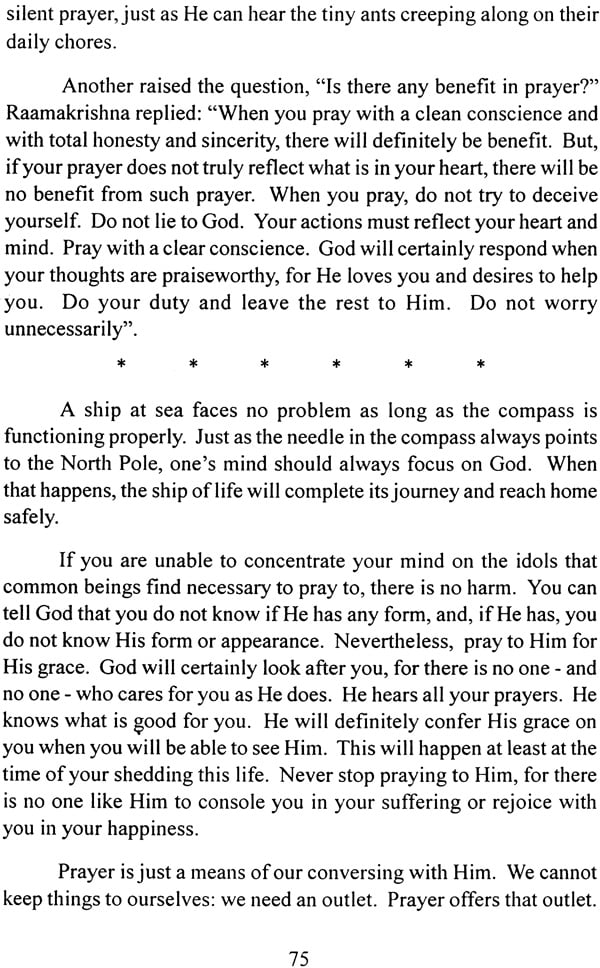
The Teachings of Raamakrishna Paramahamsa
Book Specification
| Item Code: | NAD453 |
| Author: | C. Rajagopalchari |
| Publisher: | Bharatiya Vidya Bhavan |
| Language: | English |
| Edition: | 2004 |
| ISBN: | 8172763409 |
| Pages: | 88 |
| Cover: | Paperback |
| Other Details | 8.5 inch X 5.5 inch |
| Weight | 120 gm |
Book Description
Rajaji was closely associated with Kulapati Munshi and he was among the distinguished founder-members of the Bhavan. The Bhavan had the privilege of publishing 18 books (see page ii) by him so far, the copyright of which he gifted to the Bhavan.
Rajaji’s books on Marcus Aurelis, the Bhagavacl Gita, the Upanishads are popular. But in Mahabharata and Ramayana he displays his inimitable flair for telling stories and applying their moral to the needs of modern times. The stories were originally written in Tamil and have been rendered into English, mainly by Rajaji himself. To have preserved the beauty and spirit of the great original in refined and simple English is an achievement of the highest order.
Knowledge of saasthraas is different from bhakthi or devotion. One could learn by heart sacred texts and be able to recite them. But that is not the same as leading a life of dharma (truth) and detachment. The learning of a person who has not attained mental maturity and true wisdom is worthless. Only when one’s external behavior is guided by internal mental maturity can one be said to have realized wisdom. The teachings of Raamakrishna Paramahamsa will help one attain true wisdom.
Chakravarti Rajagopalachari, popularly known as “Rajaji” or C.R., was a great patriot, astute politician, incisive thinker, great visionary and one of the greatest statesmen of all time. He was a close associate of Mahatma Gandhi, hailed a conscience-keeper of the Mahatma. As an ardent freedom-fighter, as Chief Minister of Madras, as Governor of West Bengal, as Home Minister of India and as the first Indian Governor General of India he rendered yeoman service to the nation and left an indelible impression on our contemporary life.
May men and women of all ages read Paramahamsa’s words of wosdom and benefit from them.
After I returned to -Chennai from my sojourn in Delhi early in 1950,1 was contributing short pieces on the teachings of Raamakrishna Paramahamsa to the Tamil weekly “Kalki”. I wrote those essays with considerable hesitation based on my limited understanding of the great teacher’s advice to humanity. However, several friendly readers appeared to consider my exposition quite illuminating and encouraged me to continue my work. As a result, and by the grace of God, I have been able to complete the task.
This exposition of Raamakrishna’s teachings comprising 35 chapters concluded on Deepavah day. The idea of publishing it in the form of a book has come to fruition thanks to the interest of the Raamakrishna Math, Chennai. It is my good fortune that those in charge of the Math have approved what I have written on this subject.
Did not Lord Yama tell Nachiketan (in the Katopanishad) that one cannot be blessed with a vision of the paramaathrnaa through merely mastering the saasthraas? One cannot understand Him just by one’s intelligence and knowledge gained from writings or even by discussions and debates. To succeed in that, one must have the grace of God, and must sincerely and devoutly desire to attain Him.
Knowledge of saasthraas is different from bhakthi or devotion. One could learn by heart sacred texts and be able to recite them, but that is not the same as leading a life of dharma (truth) and detachment. The learning of a person who has not attained mental maturity and true wisdom is worthless. Only when one’s external behaviour is guided by internal mental maturity can one be said to have realised wisdom. The teachings of Raamakrishna Paramahamsa will help one attain true wisdom.
May men and women of all ages read Paramahamsa’s words of wisdom and benefit from them.
This is the second of Rajaji’s masterpieces in Tamil that I have ventured to render into English so that a wider audience than just the Tamil-speaking people can benefit from savouring the presentation by Rajaji invery simple language of the wise thoughts of Raamakrishna Paramahamsa. Only a man of Rajaji’s perspicacity and wisdom could lead us through the mind of the sage of Dakshineswar in such beautiful and simple words.
When I read the original Tamil version of the thirtyfive essays that I have presented in English in this book, I could not help shedding tears of joy. India of the fifties had a lot to gain by accepting Paramahamsa’s words of commonsense and wisdom, as Rajaji repeatedly says. But what would Raamakrishna Paramahamsa and Rajaji say of the India of today? It is obvious that Paramahamsa’s teachings are even more relevant now than when Rajaji wrote these articles for the Tamil weekly “Kalki”. I hope those who read the English rendering will share the longing that is reflected in the pages that follow and celebrate that by taking a vow to follow Paramahamsa’s teachings in every way possible in their daily lives. I ask for nothing more from a people who have inherited a proud culture than that they should try to live up to it. Or is that too much to expect?
I dedicate this book to the memory of Rajaji whose commitment to probity and honesty in private and public life was a beacon to all honest beings everywhere. May good and upright conduct be restored to its rightful place in all walks of life.
I am grateful to Swami Gautamananda of Sri Ramakrishna Math, Mylapore, Chennai, for his blessings and good wishes in the publication of this English rendering of Rajaji’s “Rarnakrishna Upanishadam”.
Throughout this book, as English is not a phonetic language, I have tried to spell Indian names and words phonetically, except in cases where certain names, like my own, have been officially spelt otherwise.
| Rajaji’s Introduction to the Tamil Edition | V | |
| Preface to the English Edition | VII | |
| 1 | The Ultimate Reality | 11 |
| 2 | Religious Differences | 44 |
| 3 | Do Not Go Near a Cobra | 77 |
| 4 | Purity of Heart and Mind | 10 |
| 5 | The Path of Devotion (or Bhakthi) | 13 |
| 6 | The King and the Scholar | 16 |
| 7 | Woman and Mother | 18 |
| 8 | Even a Dumb Person Can Speak | 21 |
| 9 | The Ascetic and the Prostitute | 24 |
| 10 | Speech and Silence | 26 |
| 11 | The Bowl of Oil | 29 |
| 12 | Armour of the Universal Mother | 32 |
| 13 | A Boat on Water | 35 |
| 14 | Service to Society | 38 |
| 15 | Adhvaitha Philosophy | 41 |
| 16 | God in Idol Form | 44 |
| 17 | Bhaja Govindham | 47 |
| 18 | Religious Reform | 50 |
| 19 | Humility | 53 |
| 20 | Cheap Tricks | 55 |
| 21 | The Fundamental Truth | 57 |
| 22 | The Power of Prayer | 59 |
| 23 | Never Forget God | 61 |
| 24 | As the Cows Do | 63 |
| 25 | The Path to Emancipation | 65 |
| 26 | A Mother s Love | 67 |
| 27 | A True Devotee | 70 |
| 28 | Why Do People Lie and Swindle? | 72 |
| 29 | Prayer | 74 |
| 30 | The Permanent Light | 76 |
| 31 | Kamali’s Mirror | 78 |
| 32 | Discourses on Religion | 80 |
| 33 | Have No Doubt | 82 |
| 34 | Advice to a Grandmother | 85 |
| 35 | Where is Gopal? | 87 |
